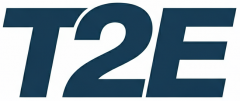An executive coach can be a valuable asset in helping you overcome psychological obstacles that may be holding you back from reaching your full potential, such as fear of failure or imposter syndrome. These barriers often stem from internalized beliefs and past experiences that can undermine confidence and decision-making.
Here are some specific actions that an executive coach may take to support you in overcoming these obstacles:
1. Identify the Root Causes
One of the first steps an executive coach will take is to help you identify the root causes of your psychological barriers. This could involve exploring past experiences, fears, and limiting beliefs that may be impacting your current mindset. By understanding the underlying causes of these obstacles, your coach can tailor their approach to address them effectively.
2. Develop Self-Awareness
Self-awareness is key to overcoming psychological barriers. An executive coach can help you develop a deeper understanding of yourself, including your strengths and weaknesses, values, and triggers that may lead to self-sabotage. With greater self-awareness, you can become more mindful of your thoughts and behaviors, making it easier to break out of negative patterns.
3.Disrupt Negative Patterns
Once the root causes are identified and self-awareness is developed, an executive coach can work with you to disrupt negative patterns that may be hindering your progress. This could include reframing negative thoughts or changing unproductive behaviors. By challenging these obstacles head-on, you can start building healthier habits that support your growth.
4. Set Realistic Goals
An executive coach can also help you set realistic goals that align with your values and strengths. By setting achievable goals, you can build momentum and confidence in overcoming psychological barriers. Your coach can also hold you accountable for taking action towards these goals, providing the necessary support and guidance along the way.
5. Implement Mindfulness Techniques
Mindfulness techniques can be powerful tools in overcoming psychological barriers. With the help of an executive coach, you can learn how to become more present and aware of your thoughts and emotions. This can help you detach from unhelpful thinking patterns and reduce stress or anxiety that may be contributing to your obstacles.
6. Encourage Positive Self-Talk
Our internal dialogue has a significant impact on our mindset and actions. An executive coach can help you cultivate positive self-talk, replacing negative self-criticisms with affirmations and empowering statements. This can boost your confidence and self-esteem, making it easier to overcome psychological barriers.
7. Provide Ongoing Support
Overcoming psychological barriers is not a one-time event; it requires ongoing effort and support. An executive coach can be there to guide you through difficult moments, celebrate your successes, and keep you accountable for sustaining progress towards your goals. With their continued support, you can maintain the skills and strategies necessary for overcoming future obstacles.
Conclusion
An executive coach can be invaluable in helping to overcome psychological obstacles and unlocking your full potential. By addressing root causes, fostering self-awareness, disrupting negative patterns, setting realistic goals, implementing mindfulness, encouraging positive self-talk, and providing ongoing support, an executive coach helps you navigate obstacles blocking your path.
If you’re facing psychological hurdles in your personal or professional life, consider partnering with an executive coach. Their guidance might be the key to unleashing your potential and thriving across all areas of life. With the right support, you can conquer any challenge. Don’t hesitate to seek out an executive coach; they could be the catalyst you need to drive forward and achieve success.
Click here for a post on coaching as a key tech exec skill.
You may also like:

 Welcome to the Career Advancement category on Tech2Exec! In this category, we will explore areas to help a tech exec advance in their career. This includes tips for personal branding, networking, and professional development.
Welcome to the Career Advancement category on Tech2Exec! In this category, we will explore areas to help a tech exec advance in their career. This includes tips for personal branding, networking, and professional development.



